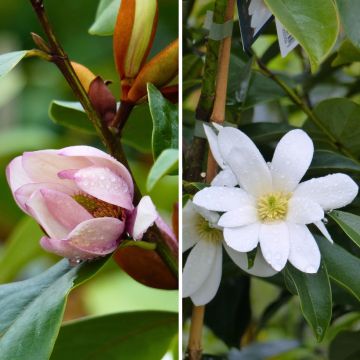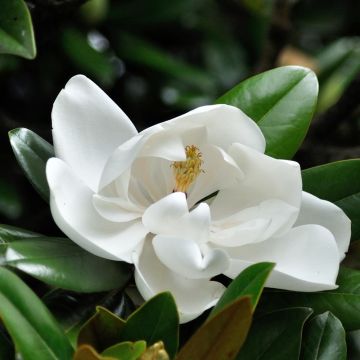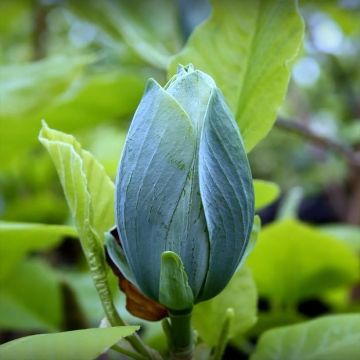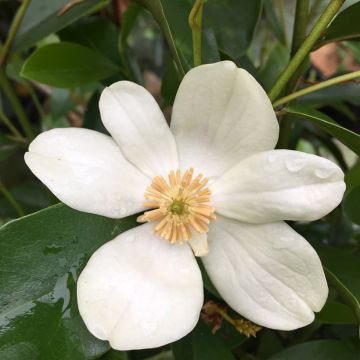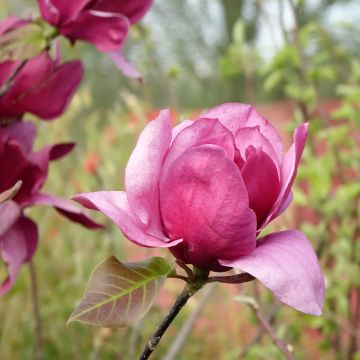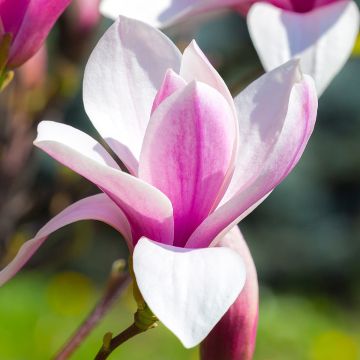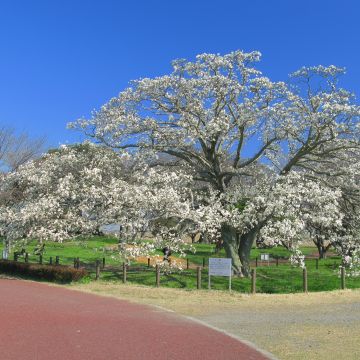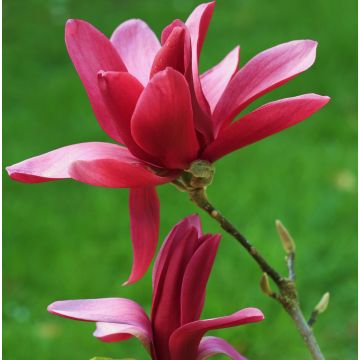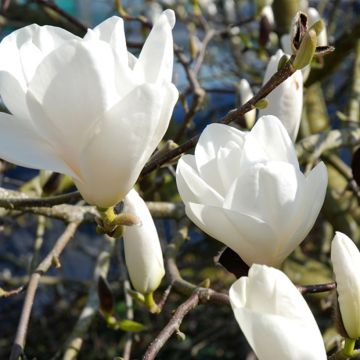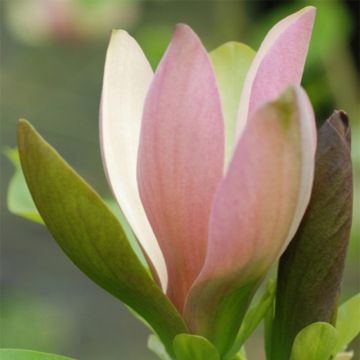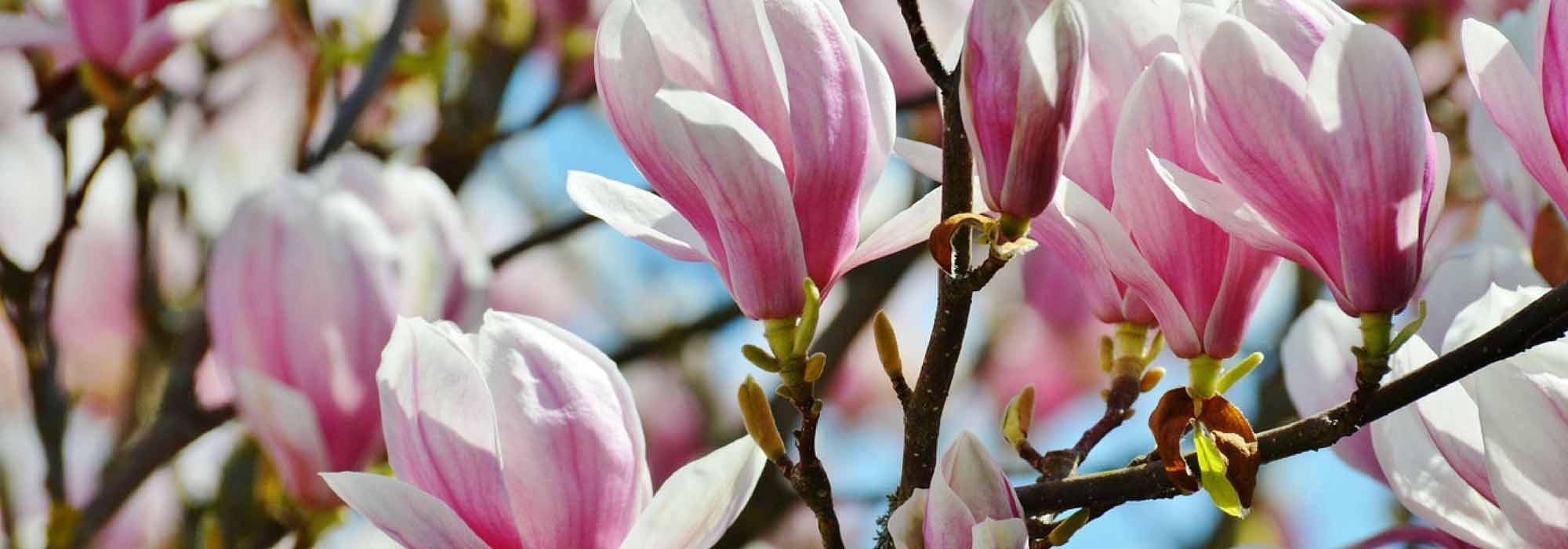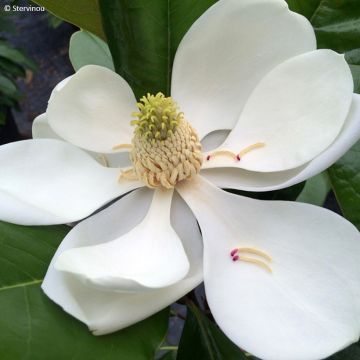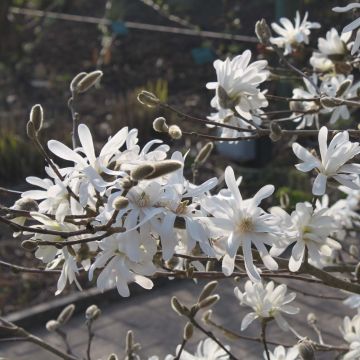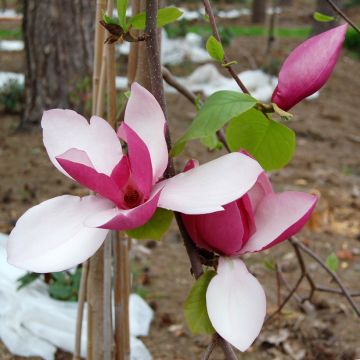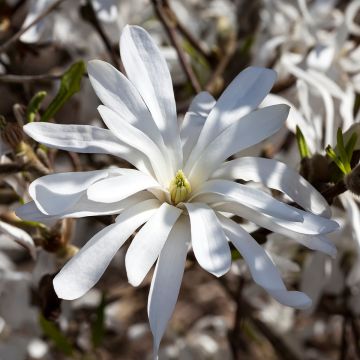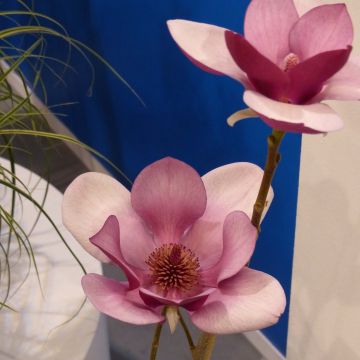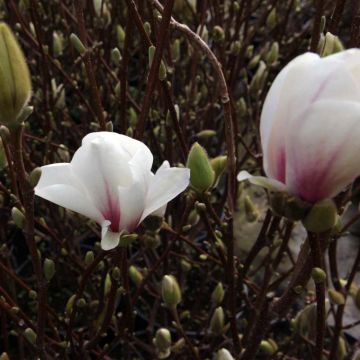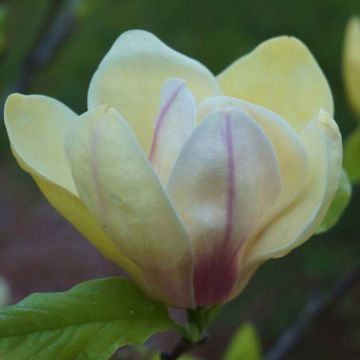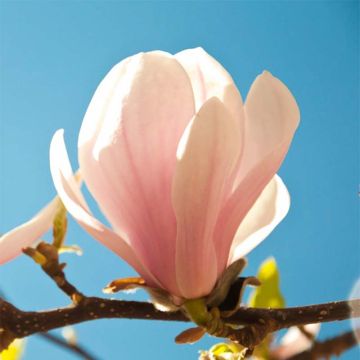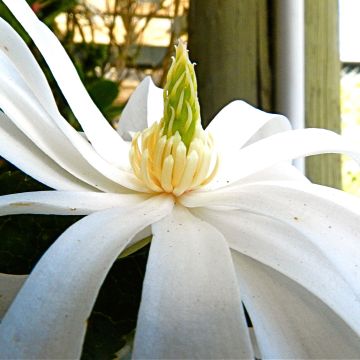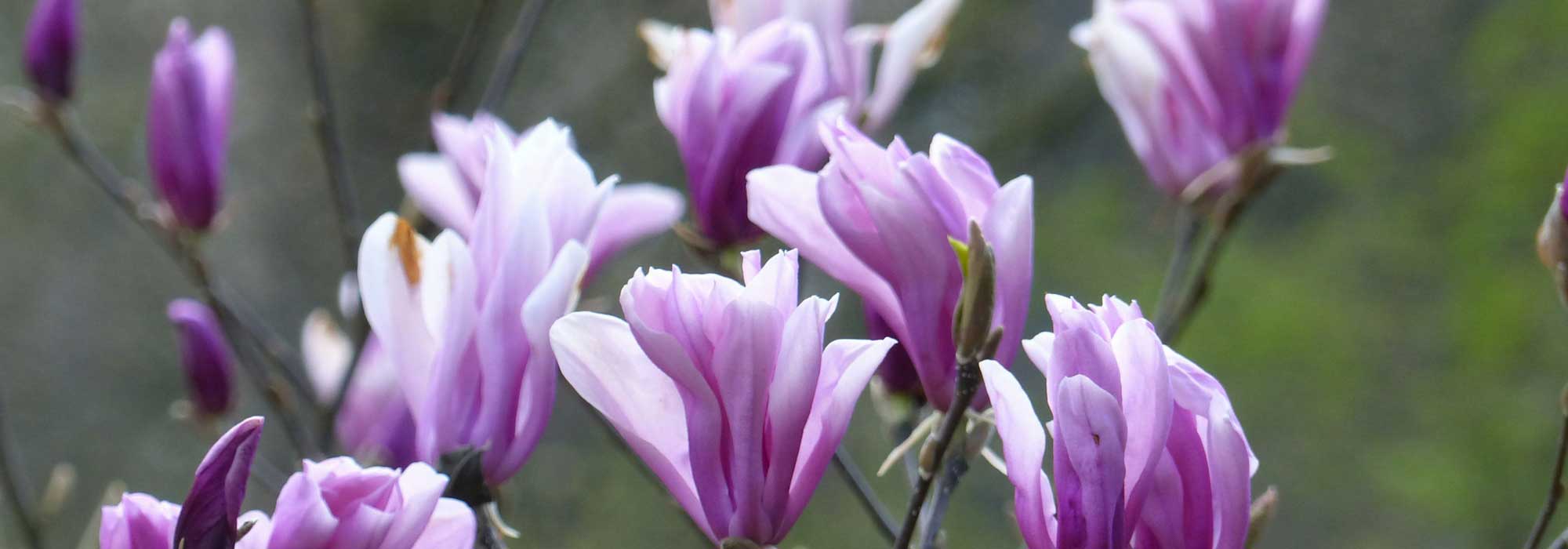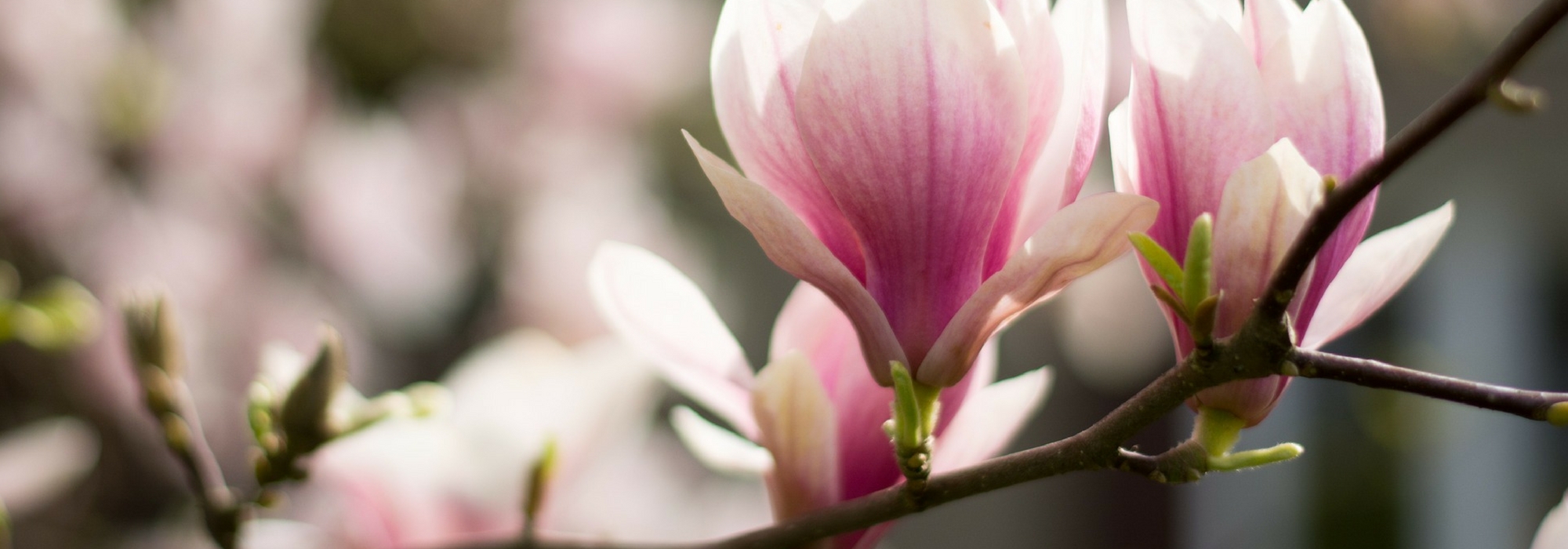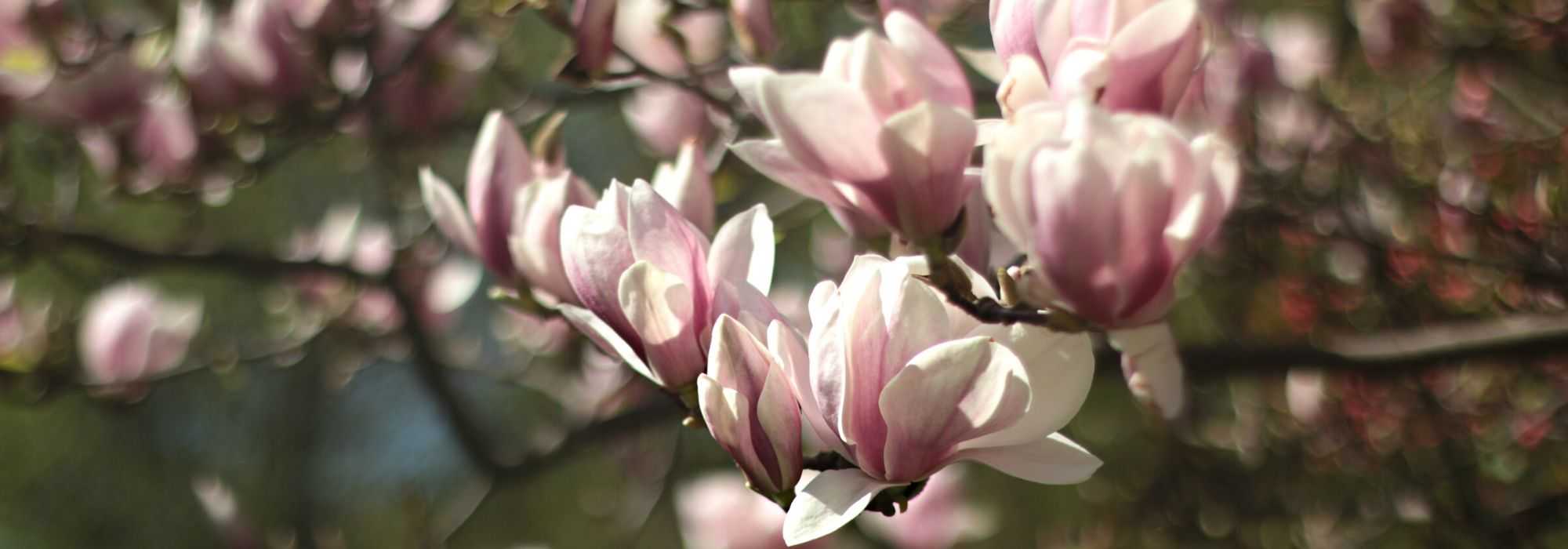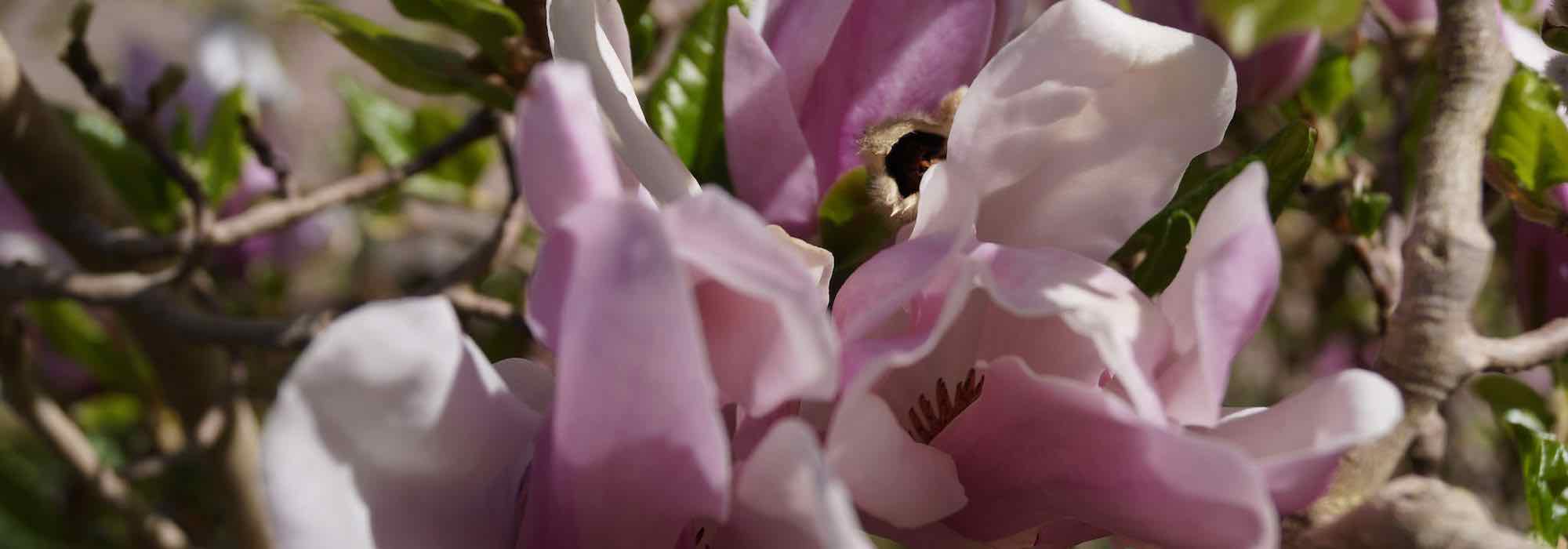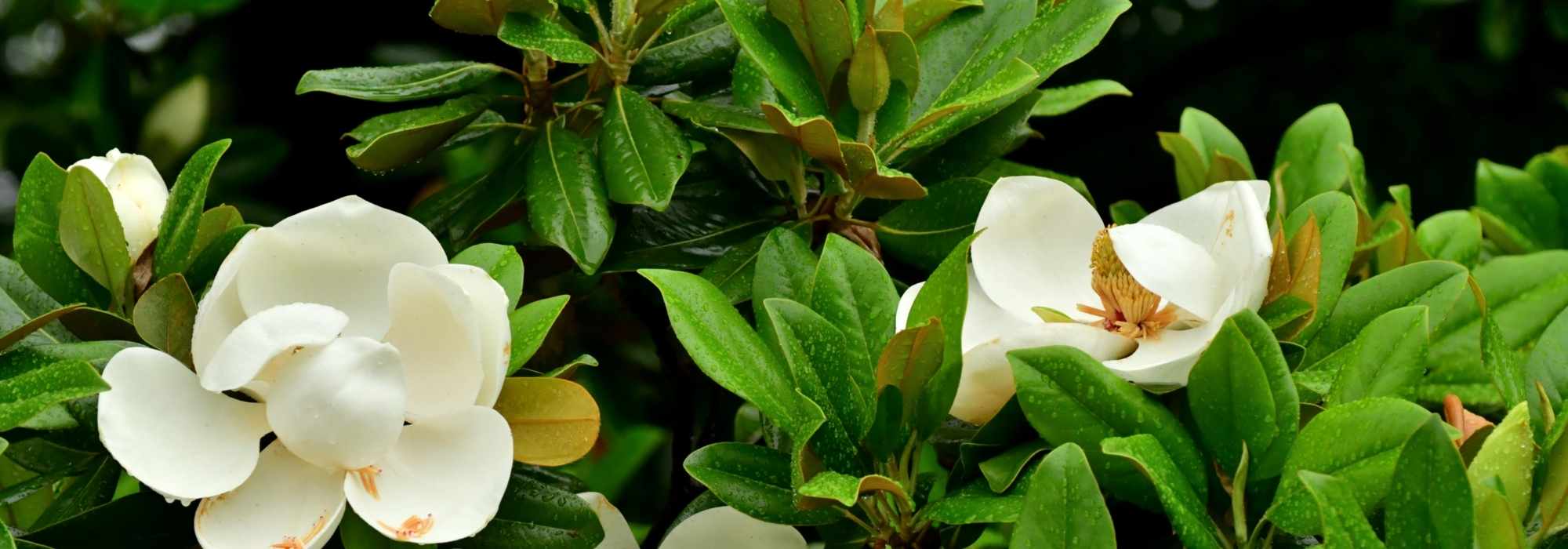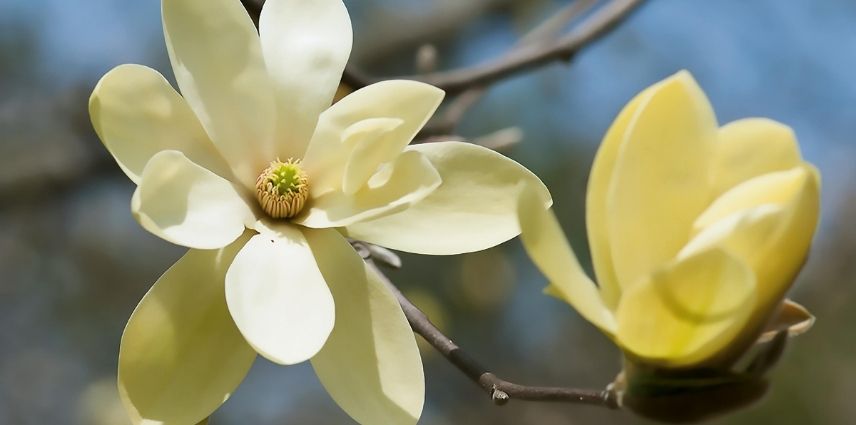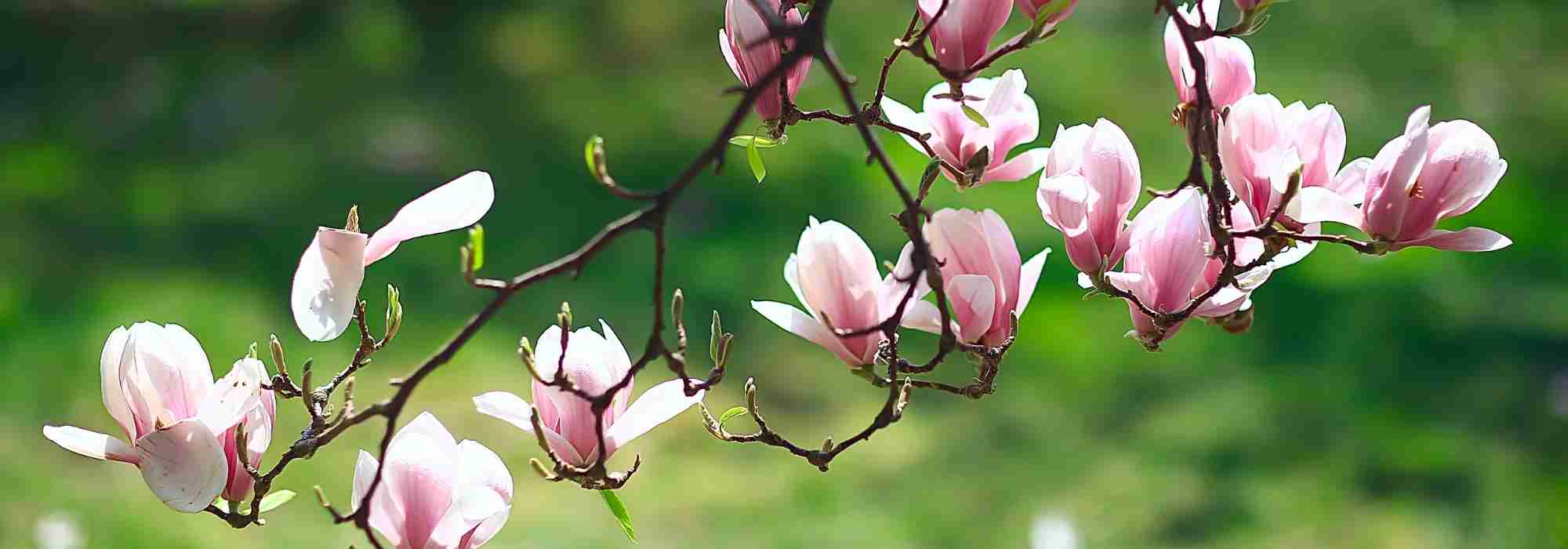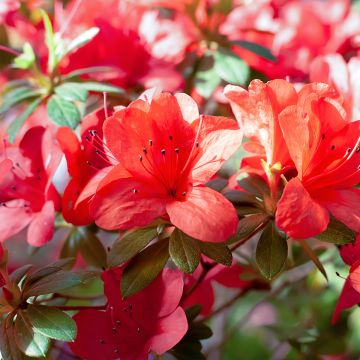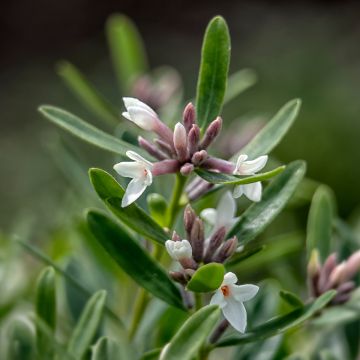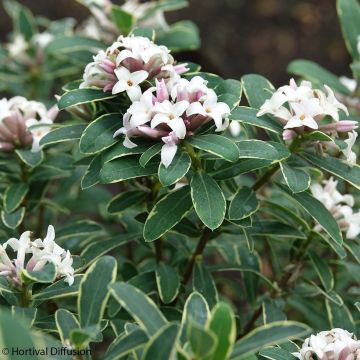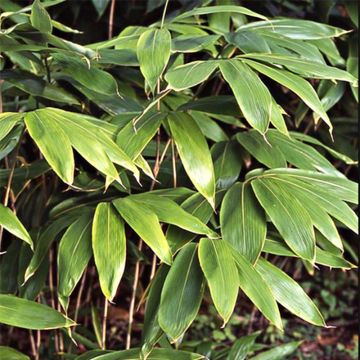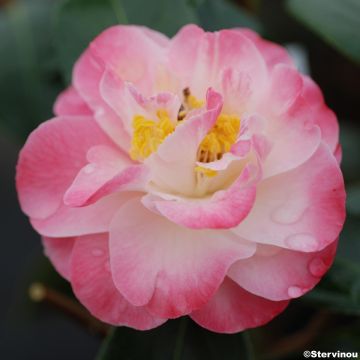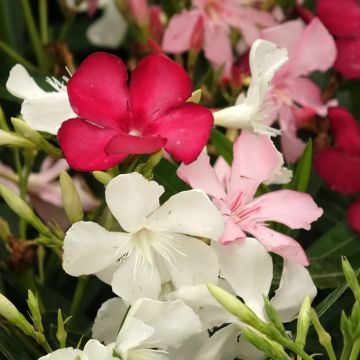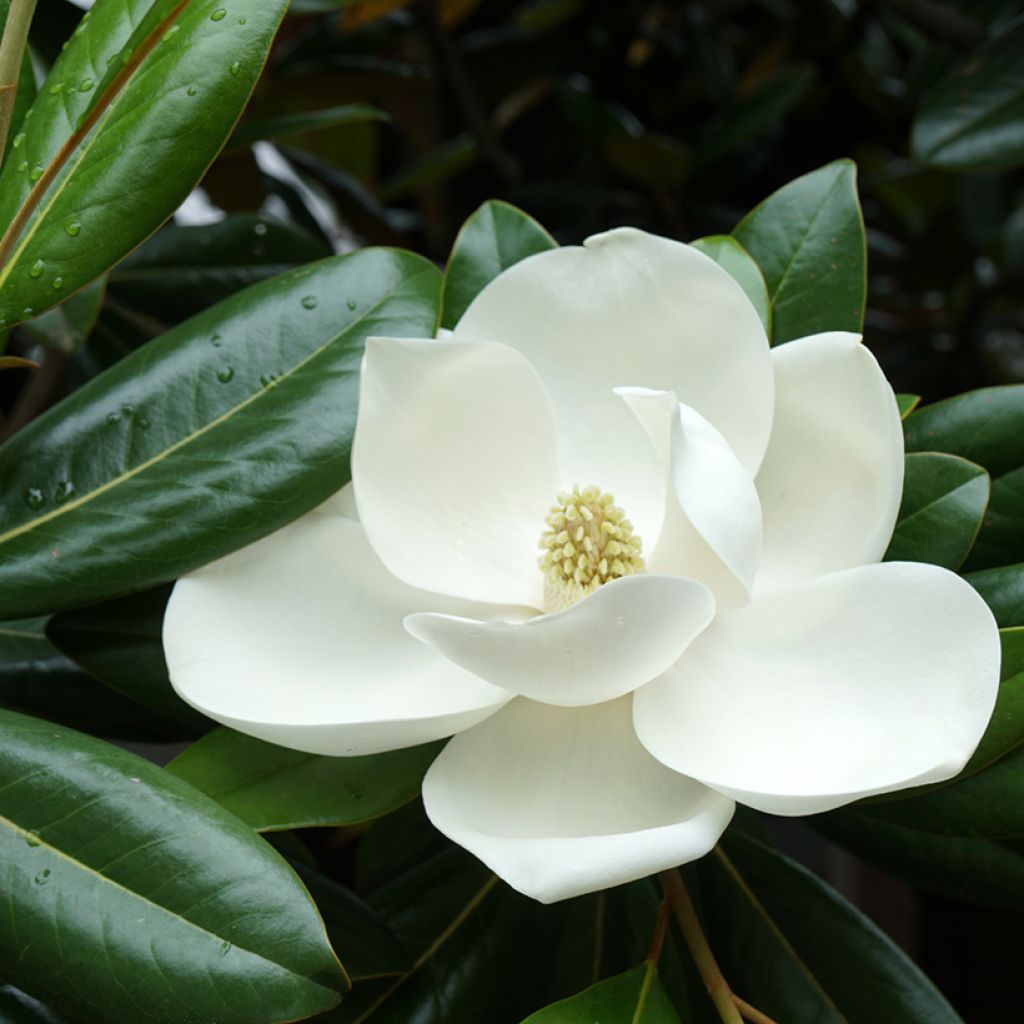

Magnolia grandiflora 'Victoria'
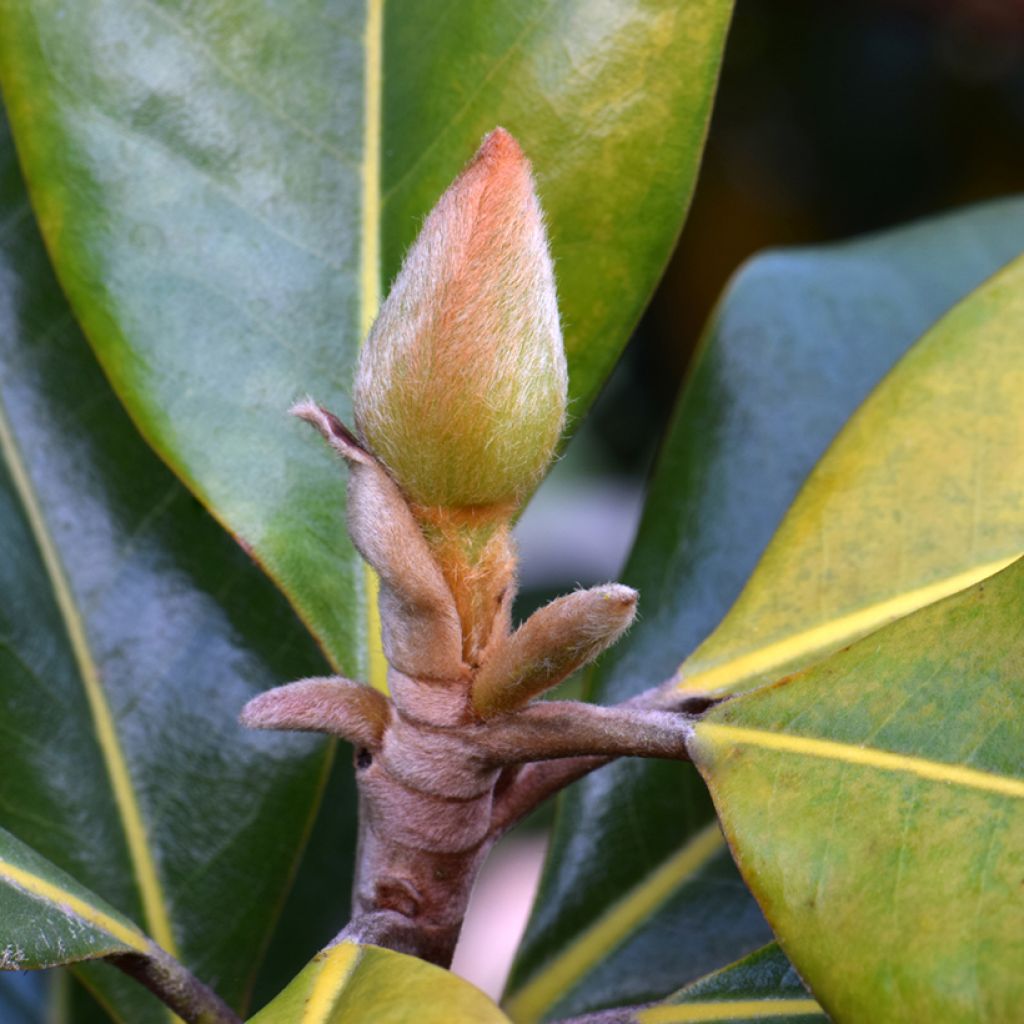

Magnolia grandiflora 'Victoria'
Magnolia grandiflora 'Victoria'
Magnolia grandiflora Victoria
Southern magnolia, bull bay
Special offer!
Receive a €20 voucher for any order over €90 (excluding delivery costs, credit notes, and plastic-free options)!
1- Add your favorite plants to your cart.
2- Once you have reached €90, confirm your order (you can even choose the delivery date!).
3- As soon as your order is shipped, you will receive an email containing your voucher code, valid for 3 months (90 days).
Your voucher is unique and can only be used once, for any order with a minimum value of €20, excluding delivery costs.
Can be combined with other current offers, non-divisible and non-refundable.
Why not try an alternative variety in stock?
View all →This plant carries a 24 months recovery warranty
More information
We guarantee the quality of our plants for a full growing cycle, and will replace at our expense any plant that fails to recover under normal climatic and planting conditions.
Would this plant suit my garden?
Set up your Plantfit profile →
Description
The Magnolia grandiflora 'Victoria' forms a small evergreen tree of beautiful stature with a pyramid-shaped silhouette that is both graphic and aesthetic. Its evergreen foliage of shiny dark green, contrasting with the rusty brown colour of the leaf undersides, is ornamental all year round. In summer, it produces regularly and staggered magnificent white flowers in large, fragrant cups, enchanting the long evenings outdoors. More hardy than most other varieties, it is suitable for small gardens due to its moderate growth. Deserving to be planted as a standalone on a short grass meadow, it will also integrate well into a diverse flower bed.
The Magnolia gave its name to the small family of Magnoliaceae, which includes the superb Tulip Trees, or Liriodendron, so named because of their tulip-shaped flowers. The good hundred species in the Magnolia genus are distributed among trees and shrubs, deciduous and evergreen, native to warm temperate regions around the globe. The Magnolia grandiflora is naturally found in the United States, from North Carolina to Florida and Texas. In these regions, it grows into a majestic tree, reaching heights of 15 to 20 m and with a more or less pyramidal habit.
'Victoria' is a cultivar selected primarily for its good cold resistance, allowing established specimens to withstand temperatures as low as -20°C or slightly lower under good conditions. Of ancient origin, it was first spotted in 1930 in British Columbia, a Canadian province whose capital is Victoria. It is particularly appreciated in central Europe, as it is more cold-resistant than others. Its hardiness is far from its only quality, as it is also very ornamental in every way, and its relative compactness allows it to be planted in most gardens, even small ones. With slow to medium growth, about 30 to 40 cm per year, it reaches approximately 5.50 m in height and 3.50 m in width after ten years of planting, with a conical habit. At maturity, its dimensions will be around 9 m in height and almost 8 m in spread, taking on a more pyramidal and graphic shape.
As with other varieties, the foliage is simply magnificent. The leaves are elliptical and of medium size, and their upper surface is a gleaming dark green. The undersides create a happy contrast with their rusty to orangish brown colour. Evergreen vegetation is ornamental throughout the year and forms a perfect dark background to enhance the flowering. This appears from July and continues until September. The large flowers, 16 to 20 cm in diameter, are pure white, formed by large sepals and petals of similar morphology (they are referred to as tepals for these reasons). These hermaphroditic flowers have male and female sexual parts, which form a small cone in the centre of the imposing corolla. Their charm, with a marked romanticism, is accompanied by a delightful fragrance that spreads throughout the garden during the beautiful season. This flowering is followed by the formation of large reddish cones, quite decorative, revealing red seeds.
The Magnolia 'Victoria' is a safe bet for gardens in cold regions and will also be appreciated in other climatic zones due to its many qualities. Plant it as a standalone on a short grass meadow or, if you lack space, integrate it into a diverse flower bed alongside other plants with similar needs. To extend the flowering period of your scene, add some Japanese Azaleas under its shade, whose vibrant trumpets will bloom in April and May. The relatively rare Cornus hongkongensis, a remarkable evergreen Dogwood, will transition with its white bracts in June-July, which appear like a colony of butterflies on the foliage. The evergreen foliage nevertheless takes on sumptuous winter colours, while decorative red fruits join the show! And for the end of the year, nothing beats a few Autumn Camellias (Camellia sasanqua), whose romantic and varied flowering comes in white, pink, red, and other shades during a season when flowers are scarce in the garden.
Magnolia grandiflora 'Victoria' in pictures
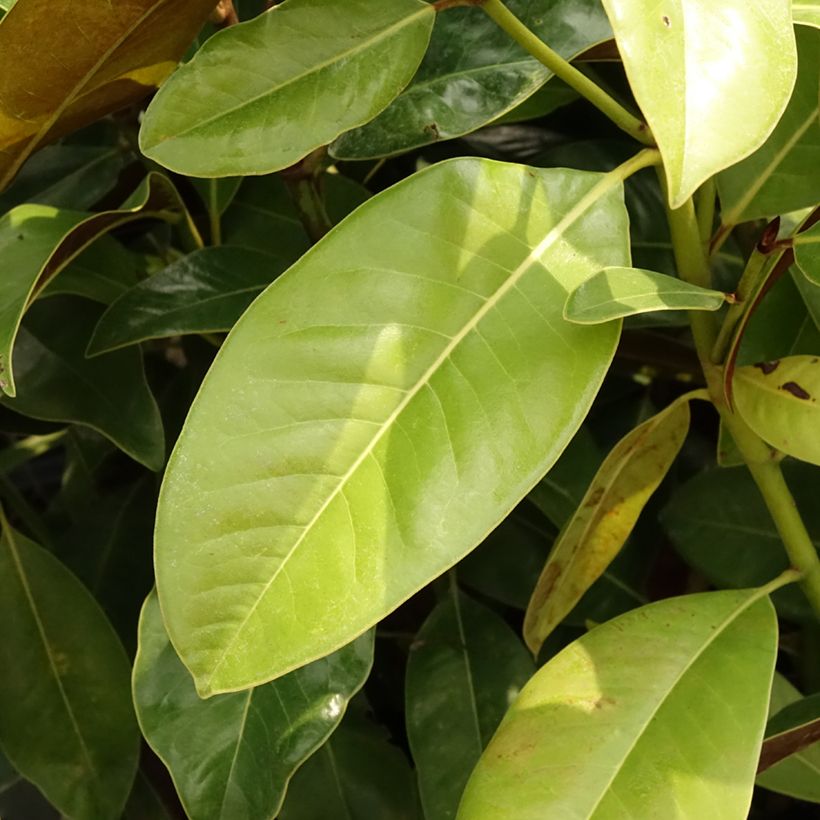

Plant habit
Flowering
Foliage
Botanical data
Magnolia
grandiflora
Victoria
Magnoliaceae
Southern magnolia, bull bay
Cultivar or hybrid
Other Magnolia
View all →Planting and care
The Magnolia grandiflora 'Victoria' should be planted in spring in cold climates, in deep, rich, moist, firm soil, and good forest soil (pH 6) enriched with clayey garden soil. Using only ericaceous soil is not recommended as it is too nutrient-poor. Limestone soils are completely unsuitable for these plants. You can plant it in autumn to take advantage of winter rainfall in warmer climates with mild winters. It prefers a sunny and open position, sheltered from prevailing winds, and will tolerate light shade in sunnier climates. Protecting young plants from severe frost during the first two or three years is advisable: cover them with a thick winter veil in case of forecasted severe frost, then remove it as soon as the temperatures become milder. The weight of snow weakens the branches, which can break, although this variety is generally less susceptible than others. This variety is quite cold-resistant as an adult, down to about -20°C. Be careful not to damage the fleshy roots, and do not bury the root ball too deeply. Mulch and water in summer, paying attention to hot and dry summers, as this magnolia requires the soil to remain somewhat moist in summer. Maintain good humidity by showering its foliage with a delicate spray only in the evening. Pruning is unnecessary; if desired, it should be done sparingly after flowering.
Planting period
Intended location
Care
Planting & care advice
This item has not been reviewed yet - be the first to leave a review about it.
Similar products
Haven't found what you were looking for?
Hardiness is the lowest winter temperature a plant can endure without suffering serious damage or even dying. However, hardiness is affected by location (a sheltered area, such as a patio), protection (winter cover) and soil type (hardiness is improved by well-drained soil).

Photo Sharing Terms & Conditions
In order to encourage gardeners to interact and share their experiences, Promesse de fleurs offers various media enabling content to be uploaded onto its Site - in particular via the ‘Photo sharing’ module.
The User agrees to refrain from:
- Posting any content that is illegal, prejudicial, insulting, racist, inciteful to hatred, revisionist, contrary to public decency, that infringes on privacy or on the privacy rights of third parties, in particular the publicity rights of persons and goods, intellectual property rights, or the right to privacy.
- Submitting content on behalf of a third party;
- Impersonate the identity of a third party and/or publish any personal information about a third party;
In general, the User undertakes to refrain from any unethical behaviour.
All Content (in particular text, comments, files, images, photos, videos, creative works, etc.), which may be subject to property or intellectual property rights, image or other private rights, shall remain the property of the User, subject to the limited rights granted by the terms of the licence granted by Promesse de fleurs as stated below. Users are at liberty to publish or not to publish such Content on the Site, notably via the ‘Photo Sharing’ facility, and accept that this Content shall be made public and freely accessible, notably on the Internet.
Users further acknowledge, undertake to have ,and guarantee that they hold all necessary rights and permissions to publish such material on the Site, in particular with regard to the legislation in force pertaining to any privacy, property, intellectual property, image, or contractual rights, or rights of any other nature. By publishing such Content on the Site, Users acknowledge accepting full liability as publishers of the Content within the meaning of the law, and grant Promesse de fleurs, free of charge, an inclusive, worldwide licence for the said Content for the entire duration of its publication, including all reproduction, representation, up/downloading, displaying, performing, transmission, and storage rights.
Users also grant permission for their name to be linked to the Content and accept that this link may not always be made available.
By engaging in posting material, Users consent to their Content becoming automatically accessible on the Internet, in particular on other sites and/or blogs and/or web pages of the Promesse de fleurs site, including in particular social pages and the Promesse de fleurs catalogue.
Users may secure the removal of entrusted content free of charge by issuing a simple request via our contact form.
The flowering period indicated on our website applies to countries and regions located in USDA zone 8 (France, the United Kingdom, Ireland, the Netherlands, etc.)
It will vary according to where you live:
- In zones 9 to 10 (Italy, Spain, Greece, etc.), flowering will occur about 2 to 4 weeks earlier.
- In zones 6 to 7 (Germany, Poland, Slovenia, and lower mountainous regions), flowering will be delayed by 2 to 3 weeks.
- In zone 5 (Central Europe, Scandinavia), blooming will be delayed by 3 to 5 weeks.
In temperate climates, pruning of spring-flowering shrubs (forsythia, spireas, etc.) should be done just after flowering.
Pruning of summer-flowering shrubs (Indian Lilac, Perovskia, etc.) can be done in winter or spring.
In cold regions as well as with frost-sensitive plants, avoid pruning too early when severe frosts may still occur.
The planting period indicated on our website applies to countries and regions located in USDA zone 8 (France, United Kingdom, Ireland, Netherlands).
It will vary according to where you live:
- In Mediterranean zones (Marseille, Madrid, Milan, etc.), autumn and winter are the best planting periods.
- In continental zones (Strasbourg, Munich, Vienna, etc.), delay planting by 2 to 3 weeks in spring and bring it forward by 2 to 4 weeks in autumn.
- In mountainous regions (the Alps, Pyrenees, Carpathians, etc.), it is best to plant in late spring (May-June) or late summer (August-September).
The harvesting period indicated on our website applies to countries and regions in USDA zone 8 (France, England, Ireland, the Netherlands).
In colder areas (Scandinavia, Poland, Austria...) fruit and vegetable harvests are likely to be delayed by 3-4 weeks.
In warmer areas (Italy, Spain, Greece, etc.), harvesting will probably take place earlier, depending on weather conditions.
The sowing periods indicated on our website apply to countries and regions within USDA Zone 8 (France, UK, Ireland, Netherlands).
In colder areas (Scandinavia, Poland, Austria...), delay any outdoor sowing by 3-4 weeks, or sow under glass.
In warmer climes (Italy, Spain, Greece, etc.), bring outdoor sowing forward by a few weeks.






























